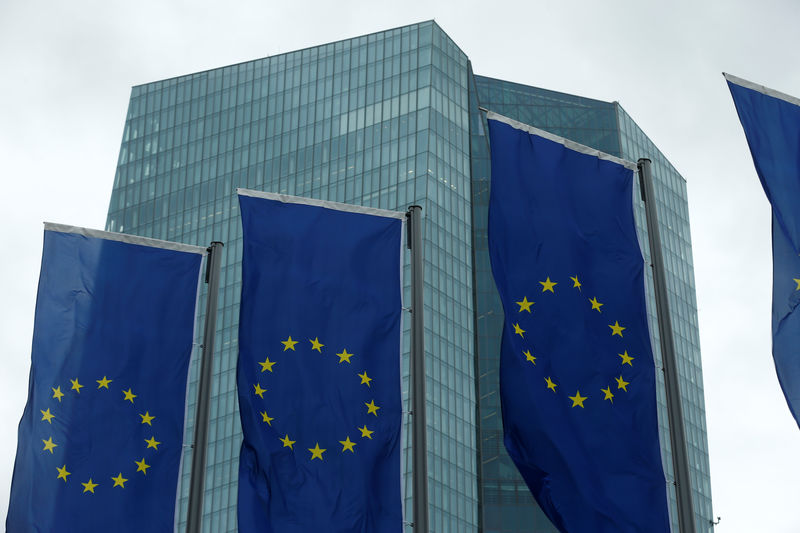Investing.com — A declining working age population, once thought to be isolated to the East where Japan and South Korea have fought the economic toll of a diminishing labor pool for decades, has now washed up on Europe’s shores, causing significant concern. But just how big of a problem is Europe’s declining working age population?
“The working age population in the euro area is projected to fall by 6.4% by 2040,” Morgan Stanley in its Future of Europe Bluepaper published Oct. 9, estimating a 4% hit to euro area GDP by 2040.
As a country or region’s working age population declines, there are fewer individuals contributing to its economic output and productivity, marking a blow to GDP, or gross domestic output, particularly when coupled with a aging population.
But some euro-area countries are likely to feel more pain than others: Italy, with a working age population expected to shrink by as much as 10% between 2025 and 2040, faces the steepest challenges. While France, given its relatively stronger demographic outlook, would likely be the least affected among major economies.
Lessons from Asia: Japan and South Korea
The demographic crisis in Europe isn’t a new phenomenon. Japan and South Korea have faced these challenges for decades. These Asian economies, which have been at the sharp end of dealing with aging populations and declining birth rates, can offer a window into this problem and valuable insight into how effective, or not, the solutions have proved along the way.
Japan has implemented a myriad policies to address its demographic challenges, including efforts to increase female labor force participation, raise the retirement age, and cautiously open up to more immigration.
These measures, however, have had limited success, as cultural norms and economic pressures continue to discourage higher birth rates.
For the past three decades, Japan’s fertility rate has been below 1.5, and the most recent statistics in 2022 recorded the lowest level, 1.26, according to data from the Center for Strategic and International Studies.
Still, Europe’s hopes for addressing these demographic headwind may involve a mix of the policies implemented in the East, Morgan Stanley said.
Turning to policy to cushion economic blow from demographic crisis
Three potential policy options could counteract these headwinds in Europe: increasing net migration, raising the effective retirement age, and closing the gap between male and female labor force participation rates.
These policies could add between 1.3% and 2.5% to baseline GDP for the euro area by 2040, according to Morgan Stanley’s scenario modelling. But the degree of success of these policies in addressing the demographic problem will vary from country to country as some may have a head start having pursued these policies early than others.
Germany, the UK, and Spain, would “see the greatest impact from increased net migration, while Italy, could benefit most from closing the gender participation gap in the workforce,” Morgan Stanley said.
Increasing net migration by one standard deviation relative to each country’s historical levels could boost euro area GDP by 1.8% by 2040.
Closing the gap between male and female labor force participation rates could also have a significant impact, potentially increasing euro area GDP by 2.5% by 2040, Morgan Stanley estimates. Italy, which has a male vs. female labor force participation 8% below the euro area average, could see meaningful increases in its labour force if it were to reduce this gap.
Raising the effective retirement age by one year could increase euro area GDP by 1.3% by 2040. France and Spain, where the effective retirement age remains 2 years to 3 years below the European average, stand out as the countries that would benefit most from this policy.
Earnings growth in the crosshairs
This demographic challenge is already impacting European corporate outlooks. And if allowed to exacerbate without policy action, Morgan Stanley estimates, could lower companies’ long-term earnings growth from 5.1% to 4.2% by 2030.
This theme is already emerging a hot topic of conversation in European C-suite commentary, with quarterly transcripts showing a notable rise in mentions of “aging population,” especially compared to US companies, it added.
AI, automation to the Rescue?
The estimated hit to corporate earnings in Europe, however, assumes no increase in margins or gains in productivity from AI or automation, which “could potentially offset some negative impacts,” Morgan Stanley said.
The productivity boost from widespread use of AI and automation tools is likely to become more evident as companies begin to see the fruits of their AI investments and adoption efforts as soon as next year.
“2024 is the year of AI investment and adoption; in 2025, we think corporate gains should be more evident,” Morgan Stanley said.
Automation will also have an increasing role to play to plug the productivity gap from a decline in the working age in Europe, which is relatively under-penetrated by automation technologies.
Industrial robot density in South Korea, for instance, was just over 1,000 per 10,000 people employed in the manufacturing in 2022, compared with less than half that number in Germany.
A call for action to safeguard Europe’s economic future
As Europe grapples with this demographic shift, the race is on to find solutions that can mitigate its economic toll and ensure sustainable growth in the decades to come. While the experiences of Japan and South Korea offer valuable lessons; Europe will need to tailor its approach to its unique social, political, and economic landscape.
The challenge is clear: Europe must implement effective policies that address its declining working-age population. While policies aimed at increasing migration, lifting the statutory retirement age, increasing female workforce participation will help cushion the impact, Europe must embrace technological advancements including AI and automation to help bridge the productivity gap.
The key to successfully counteracting the impact on growth and safeguarding Europe’s economic future requires effectively implementing these strategies while ensuring they align with societal values and economic goals.

